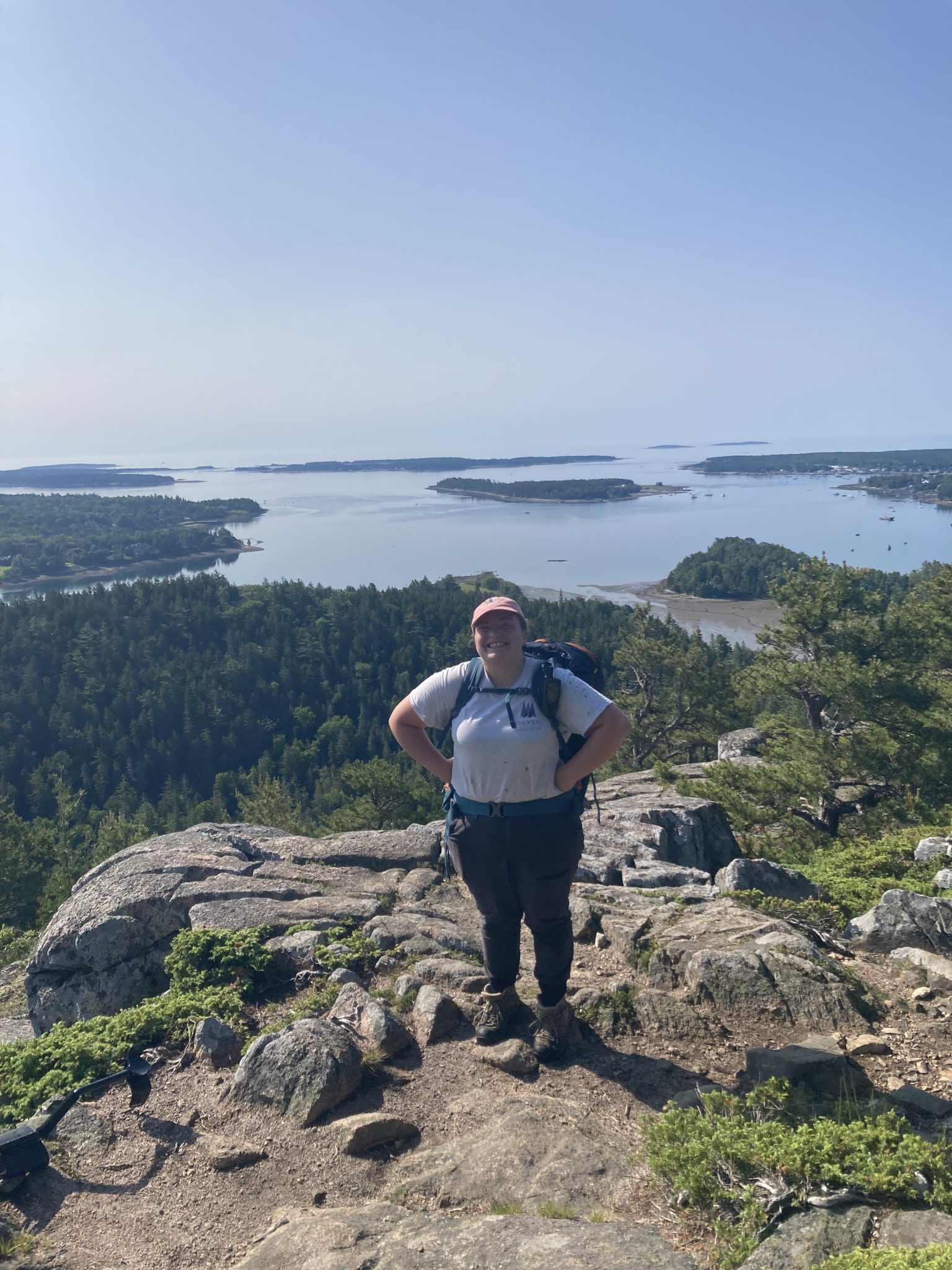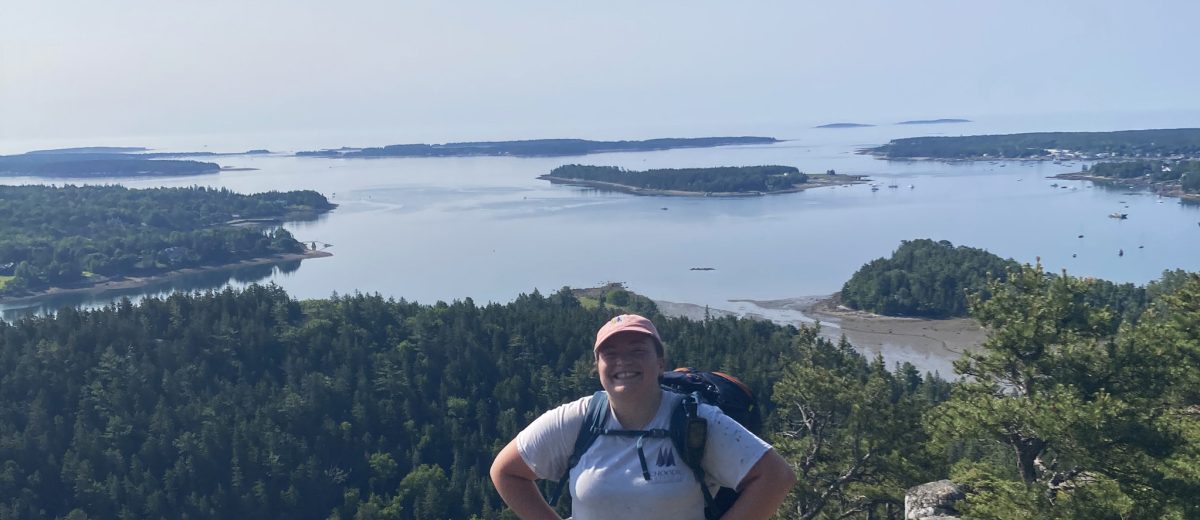story + photos by Jamie Attanasio, Schoodic Institute Forest Ecology Technician
The waves slapped the bow of the Mailboat that was chartering us to Isle au Haut. The heat radiating from our coffee cups warmed our hands as we scanned the surf for seals and seabirds. Isle au Haut is a short boat ride from Stonginton, and Acadia National Park manages half of the island. We were headed there for work as the forest health and monitoring crew. For the crew this past 2023 season, Isle au Haut was the pinnacle of the summer: a week of rain crashing on our wooden cabin, identifying (at least attempting to) different grasses growing in rock crevices, and freezing dips in the ocean.
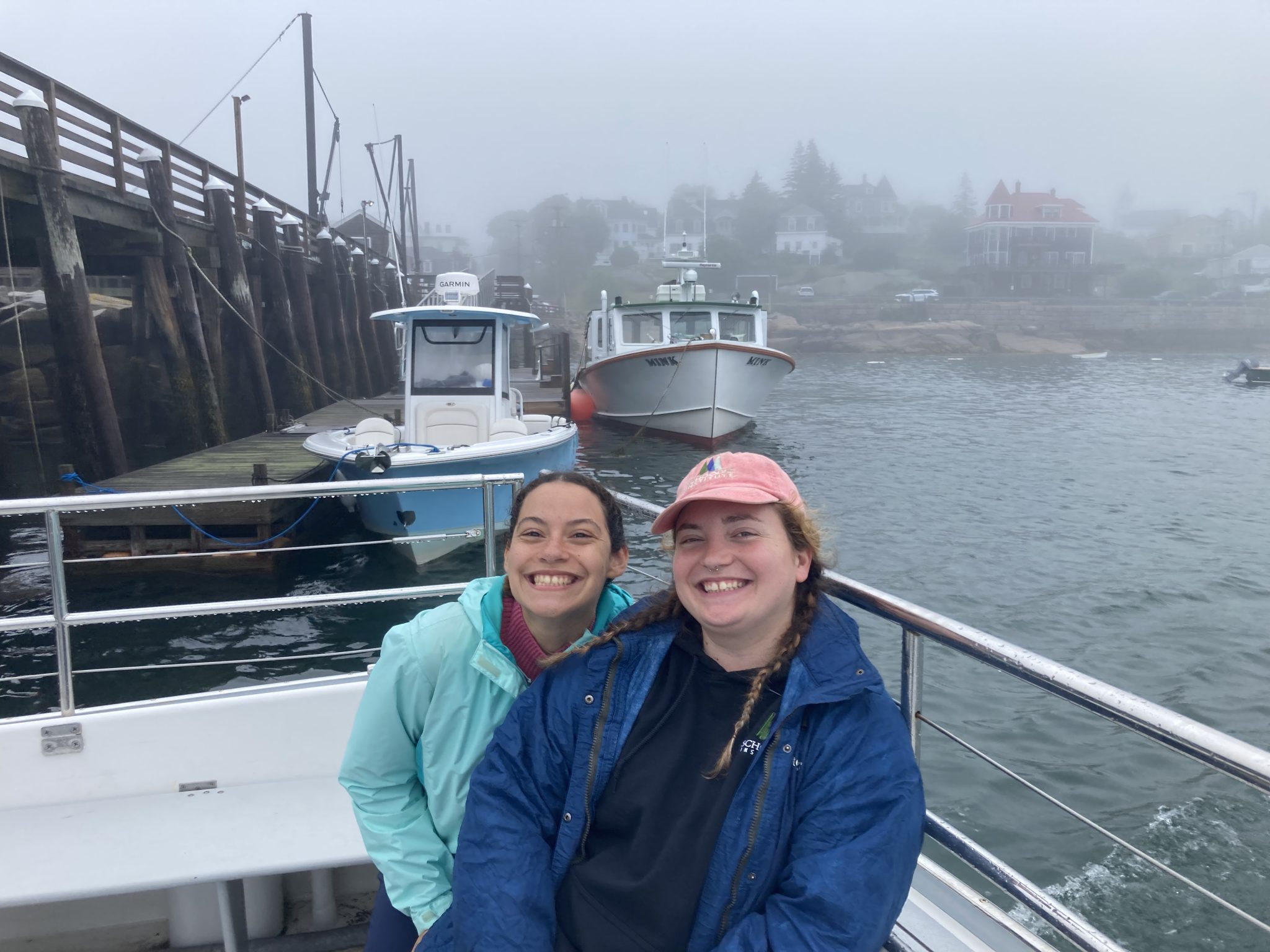
I work for the Northeast Temperate Inventory and Monitoring Network (NETN) as the lead for the forest health and monitoring crew. There are Inventory and Monitoring Networks throughout the U.S., collecting data on crucial park resources, or the “vital signs” of parks. The forest health and monitoring crew samples permanent forest plots in 23 national parks (in several networks) ranging from the historic battlefield parks in Virginia to the spruce topped mountains of Acadia. NETN monitors the composition and structure of park forests, and collects data for assessing forest soil condition, impacts of white-tailed deer herbivory, and land cover. Our job as the forest crew is to hike out to permanent plots and collect a series of metrics about forest health, like amount of tree regeneration, species composition, invasive plants, and deer browse (just for some examples). We sample the same plots every four years to gather information on how the forests in our parks are changing over time. Of course, while we are sampling the plot we are hunting for the biggest tree of the season to gain bragging rights among the crew (pictured below).
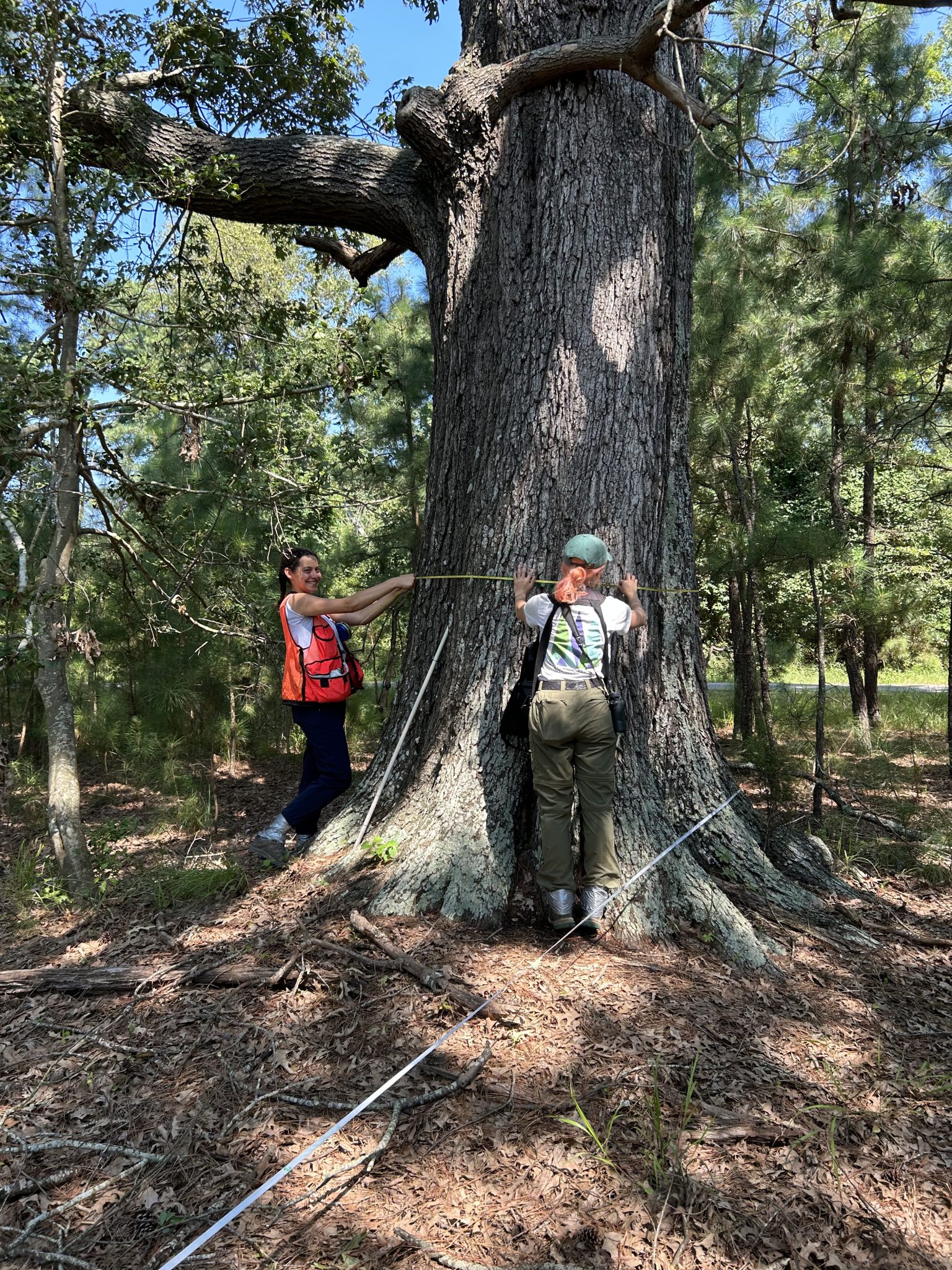
Forest health monitoring is crucial for our parks. Our purpose is making sure natural resource managers have the most up-to-date information on what is happening in their forests so they can make the most informed management decisions. Deer-browse, invasive plants, pests, and pathogens are drastically changing our forests. We give the natural resource managers concrete examples of deer-browse impacts on tree regeneration, provide early detection of invasive species, and document the spread of pests and pathogens that may have not been in the park previously.
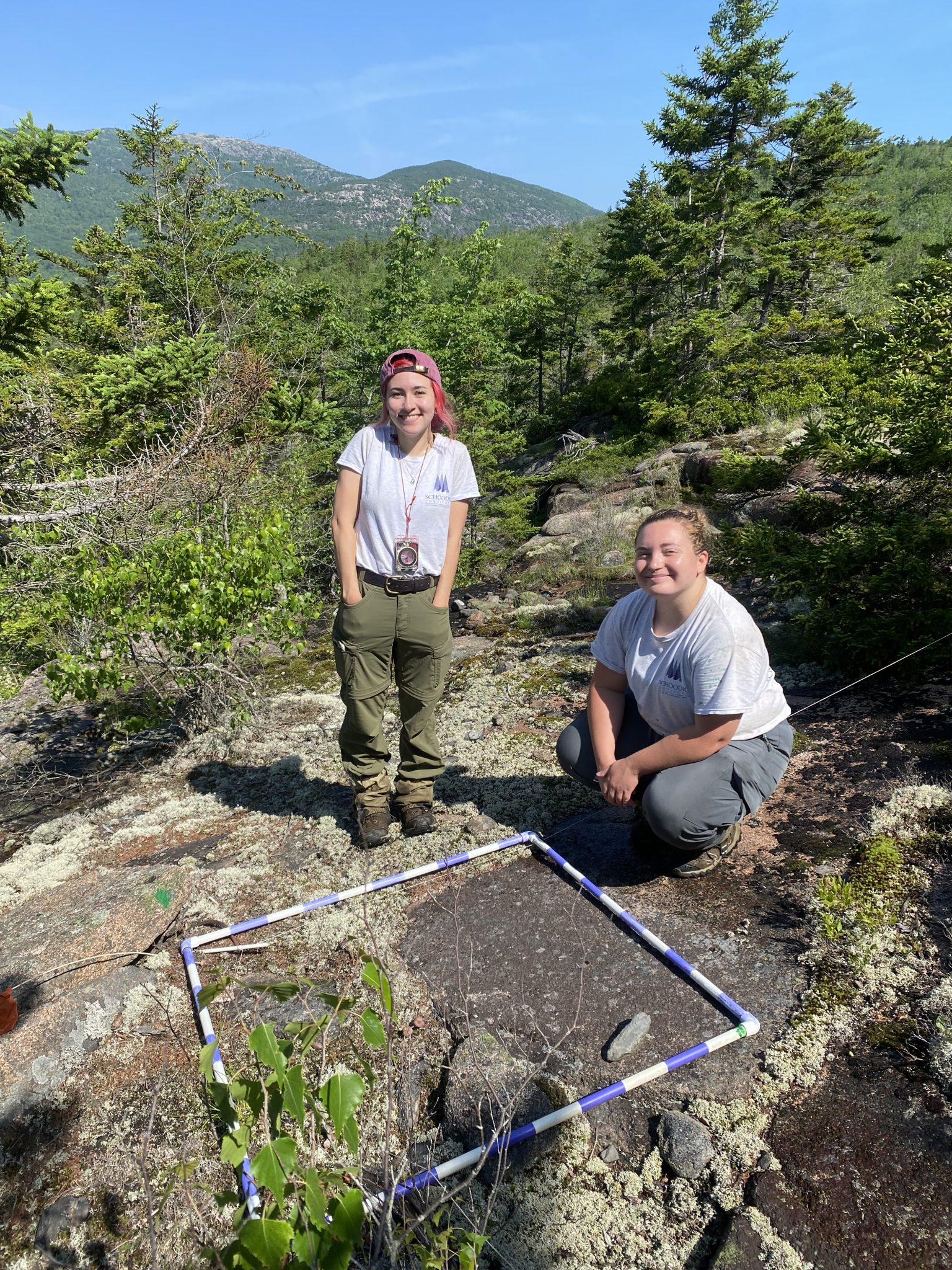
While the tasks may seem repetitive, we do get to explore and work in various landscapes. In Isle au Haut we sink into caribou lichen and are stabbed by spiteful spruce needles, while in Fredericksburg, Virginia, we crunch desiccated tulip poplar leaves and keep an eye out for Civil War ghosts. This job also gives the opportunity to see a large part of both rural and urban parts of the East Coast. For some crew members it’s their first time having a maple creemee in Vermont, or for others it may be their first time riding the DC metro. We also get to see the different priorities of each park and how that affects their management strategies. A historic battlefield park might be more concerned with preserving the historic landscape, while a park with active forestry may be more focused on their tree regeneration.
Although I love the adventures of being on a traveling crew, by the time our season is over I am usually excited about leaving the blue and gray battlefields and returning to the red and yellow leaves of Maine in the midst of autumn. Returning to Schoodic Institute as an ecology technician at the end of the season has been a great way for me to catch up on the multitude of projects Schoodic Institute researchers are involved in: like mapping rockweed on coastal Maine, surveying plants for climate change refugia, and identifying birds during different seasons at Schoodic Point.
